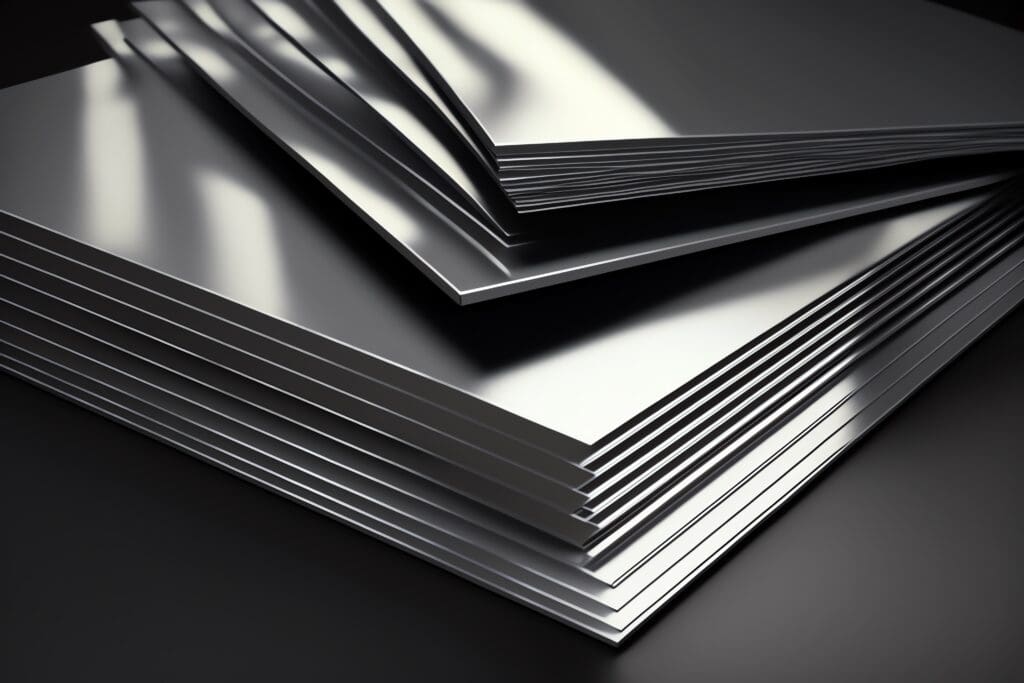Stainless Steel and Carbon Steel Compared
In the world of metals, two materials are commonly used – stainless steel and carbon steel. These alloys are ubiquitous in various industries, playing pivotal roles in construction, manufacturing, and even culinary pursuits. While they share the commonality of being steel alloys, the differences between stainless steel and carbon steel are vast and impactful. Our team compiled this short summary of the distinctions between these two materials, including their compositions, properties, applications, and the factors that guide their selection in diverse fields.

Factors to Consider When Choosing Between Stainless Steel and Carbon Steel:
Composition and Structure
Stainless steel and carbon steel differ fundamentally in their composition. Carbon steel is primarily composed of iron and carbon, with the carbon content ranging from 0.2% to 2.1%. The varying carbon concentrations impart distinct mechanical properties to carbon steel, influencing its strength, hardness, and ductility. Stainless steel, on the other hand, is an alloy of iron, chromium, nickel, and other elements. The key component setting stainless steel apart is chromium, with a minimum content of 10.5%. This addition of chromium creates a passive oxide layer on the surface, rendering stainless steel highly resistant to corrosion.
Corrosion Resistance
One of the most significant disparities between stainless steel and carbon steel lies in their susceptibility to corrosion. Carbon steel, in its untreated form, is prone to rusting when exposed to moisture and oxygen. The iron-carbon alloy oxidizes, forming iron oxide or rust, which not only compromises the structural integrity but also affects the aesthetic appeal of the material. Stainless steel, thanks to its chromium content, boasts inherent corrosion resistance. The chromium forms a protective oxide layer on the surface, shielding the alloy from rust and corrosion. This makes stainless steel ideal for applications in environments with high humidity, moisture, or exposure to corrosive substances.
Strength and Durability
Strength is a critical parameter in material selection, especially in applications where structural integrity is paramount. Carbon steel, with its varying carbon content, exhibits excellent strength and hardness. The addition of carbon enhances the steel’s ability to withstand heavy loads and resist deformation. However, carbon steel falls short when it comes to corrosion resistance, necessitating protective coatings or treatments in corrosive environments. Stainless steel strikes a balance between strength and corrosion resistance. While not as strong as high-carbon steel, it still possesses formidable strength, making it suitable for a wide range of applications. The corrosion-resistant properties of stainless steel contribute to its longevity, reducing the need for frequent maintenance and replacements.
Versatility in Applications
The divergent characteristics of stainless steel and carbon steel make them suitable for different applications. Carbon steel finds favor in construction, manufacturing, and infrastructure projects where strength and hardness are paramount. It is commonly used in the production of structural components, machinery, and tools. However, in environments where corrosion is a concern, carbon steel may require additional protective measures.
Stainless steel, with its corrosion resistance and aesthetic appeal, finds widespread use in industries such as food and beverage, pharmaceuticals, and architecture. It is the material of choice for kitchen appliances, cutlery, and medical equipment due to its hygienic properties and resistance to staining. In architectural applications, stainless steel’s durability and aesthetic appeal make it a popular choice for cladding, handrails, and other design elements.
Cost Considerations
Cost is a crucial factor in material selection for any project. Generally, carbon steel is more economical than stainless steel. The raw materials for carbon steel are abundant and less expensive, contributing to its affordability. Stainless steel, with its alloying elements, especially chromium and nickel, tends to be pricier. The higher cost of stainless steel is often justified by its longevity and resistance to corrosion, which can lead to cost savings over the long term.
Make Choosing the Right Material Easier with Assistance from the Roy Manufacturing Team.
Stainless steel and carbon steel will inevitably remain two of the most popular metals for commercial applications, yet the perfect solution depends on a number of factors: corrosion resistance, strength, durability, and cost. Carbon steel excels in strength but requires protection against corrosion, while stainless steel seamlessly blends strength with corrosion resistance.
Ultimately, the selection depends on the demands of the application and the balance between performance and economic considerations. Understanding the nuances of these steel alloys empowers engineers, architects, and manufacturers to make informed decisions, ensuring that the chosen material aligns perfectly with the requirements of the project at hand.
We are excited to talk with you about your project. Roy Manufacturing is built on the guiding principles of on-spec and on-time. You can rest assured your project will be completed to your exact specification with some of the fastest turnaround times in the industry. Contact us today to learn more and get a free quote.

